For the past several days I’ve literally been running an experiment with Pokemon GO, trying to hatch eggs while running through Brooklyn and Manhattan. I ran enough that I should have hatched the 10km egg I was incubating in the game, but I did not. For nearly 20km, its shell remained intact.
This defies the conventional wisdom you’ll find online about how egg-hatching works in the world’s current favourite video game. You’ll find confident assertions that Pokemon GO will track your movement unless you’re moving as fast as a car. Some estimate that you just need to be moving less than 32km/h, or perhaps it’s less than 24km/h.
After a few sweaty runs at something slower than the game’s alleged cut-off speed, I have found that Pokemon GO may be able to detect a runner’s movement, but it does a poor job of it. The game miscalculated how far I ran so severely that it’s got me wondering how well the game tracks player movement at all.
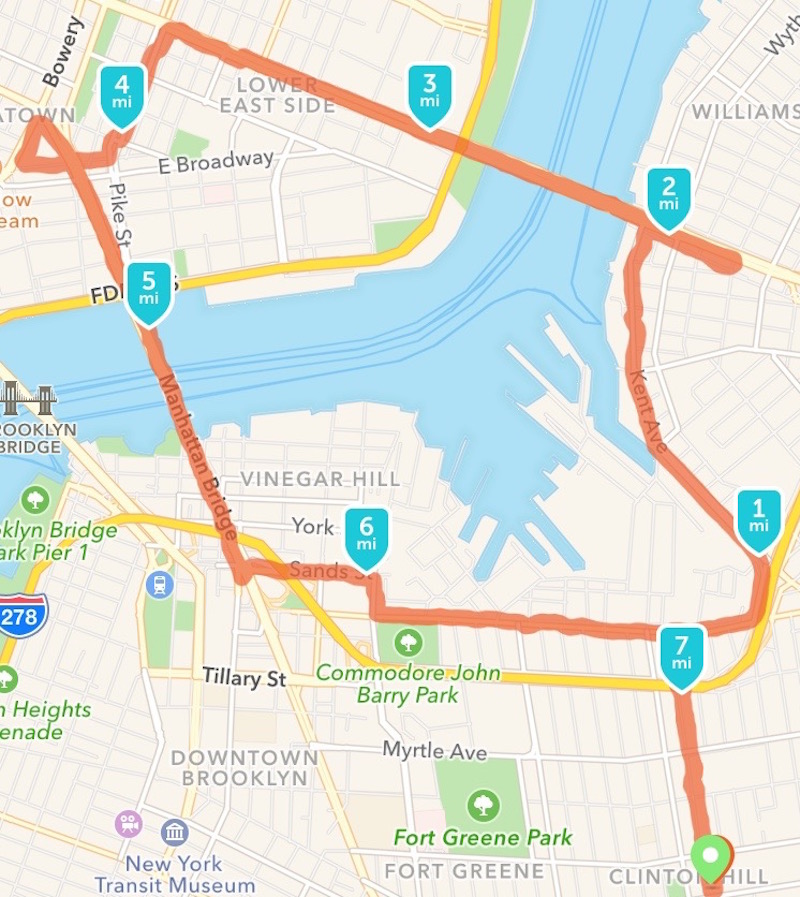
Here’s a run I did on Sunday. It’s a 11km loop from Brooklyn to Manhattan and back that I ran in 1:00:13. That’s a pretty good distance at a sub-car speed. It should have hatched an egg, right?
Nope.
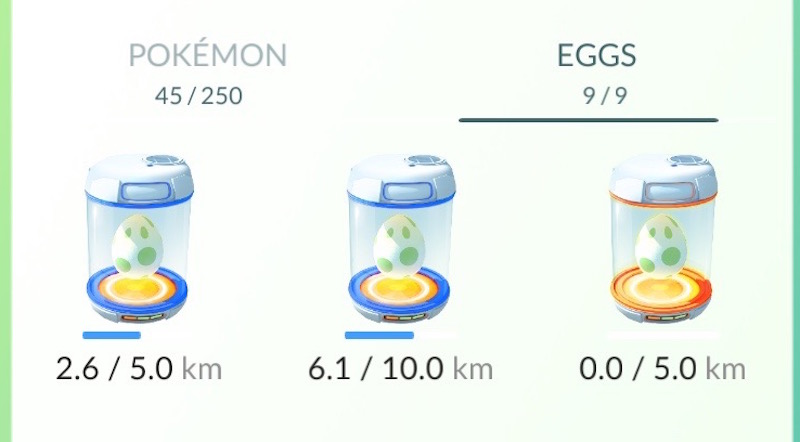
My three eggs, before my 12km run.
When I went on that run, I was incubating three Pokemon GO eggs. I had two 5km eggs and one 10km egg. The eggs are supposed to hatch once you’ve moved the designated distance while the game is operating. This system should be a source of certainty in a game full of surprise Pokemon appearances. It seems simple and, happily, it’s even an enticement to exercise.
I assumed that my run would hatch at least one egg. The measurements were stacked in my favour. Prior to my run, two of the eggs had logged some distance. The 10km egg was at 6.1km. One of my 5km eggs was at 2.6km. The other 5km was new.
I went running. I ran to Williamsburg, over the Williamsburg bridge, down through Manhattan’s Chinatown, over Manhattan Bridge as trains rumbled by and then back into Brooklyn to close my loop. I had a strong mobile phone signal all the way. Nothing hatched.
At the end of the run, I checked my three eggs. Not only hadn’t they hatched, but they barely seemed to register the journey. Each had logged just 2.2km more distance.
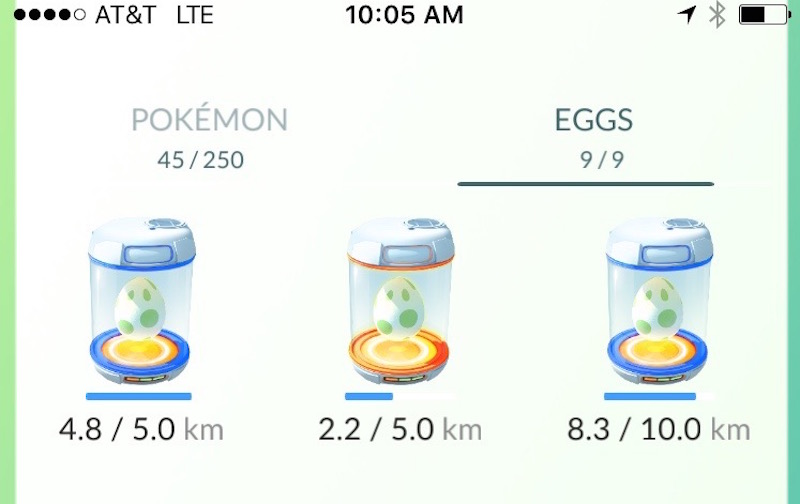
My three eggs, post-run.
You have to experiment to figure out how most things work in Pokemon GO. There’s no instruction manual and the game’s developers at Niantic are keeping quiet about most of the game’s systems. I asked them about all this egg-hatching stuff a few days ago. No reply yet. So we tinker and test and deduce.
When I did that Sunday run, I wasn’t even sure if the distance the game thought I’d moved had been divided across all three of my eggs or shared into each one. I conferred with a British video game tester named Davyd Atkins who has been posting smart stuff about egg-hatching distances on Reddit. A few days later, I walked an experiment from Kotaku‘s NYC offices near Manhattan’s Union Square to Madison Square Garden. In my walk to MSG, Runkeeper thought I moved 2km. Pokemon GO credited me with 1.7 km of movement for two of my eggs. That’s proof enough for me. The game takes the distance it thinks you moved and applies to to each egg.
But the data in front of me after that Sunday run indicated that the game thought that I’d only moved 2.2 km in a 12km run. What could have gone wrong?

A lot of things about this game are vague. But people like me and Atkins are piecing parts of it together.
I know that the game doesn’t track your movement if you don’t have it maximised on your phone. I learned this by going on a run with Pokemon GO running in the background. My eggs saw no progress.
During my Sunday run, though, the game was active nearly the entire time. At one point, while I was on Manhattan Bridge, I accidentally activated the camera and snapped a photo of my knee. I shut the camera down and went right back to the game.
I know that Pokemon GO doesn’t track steps based on the physical jostling of a walker or runner’s body movement, the way many pedometers do. There’s enough proof of this on Twitter and Reddit, where disappointed people write about getting off treadmills and seeing that the game has tracked no distance.
Pokemon GO sometimes thinks you’re moving even when you’re not, a sign that it checks distance based on GPS data, but not always correctly. On Reddit, Atkins reported that a GPS glitch caused an egg to hatch while his phone wasn’t moving. While I was writing this article, a colleague experienced the same thing. Her game hatched an egg while her phone rested on her desk. She checked the game’s map and, sure enough, some sort of GPS weirdness was causing her character to pace back and forth, gaining distance even though the phone wasn’t moving.
During my run, the game definitely knew I was moving. As I was closing the loop, it even gave me a medal for distance travelled.
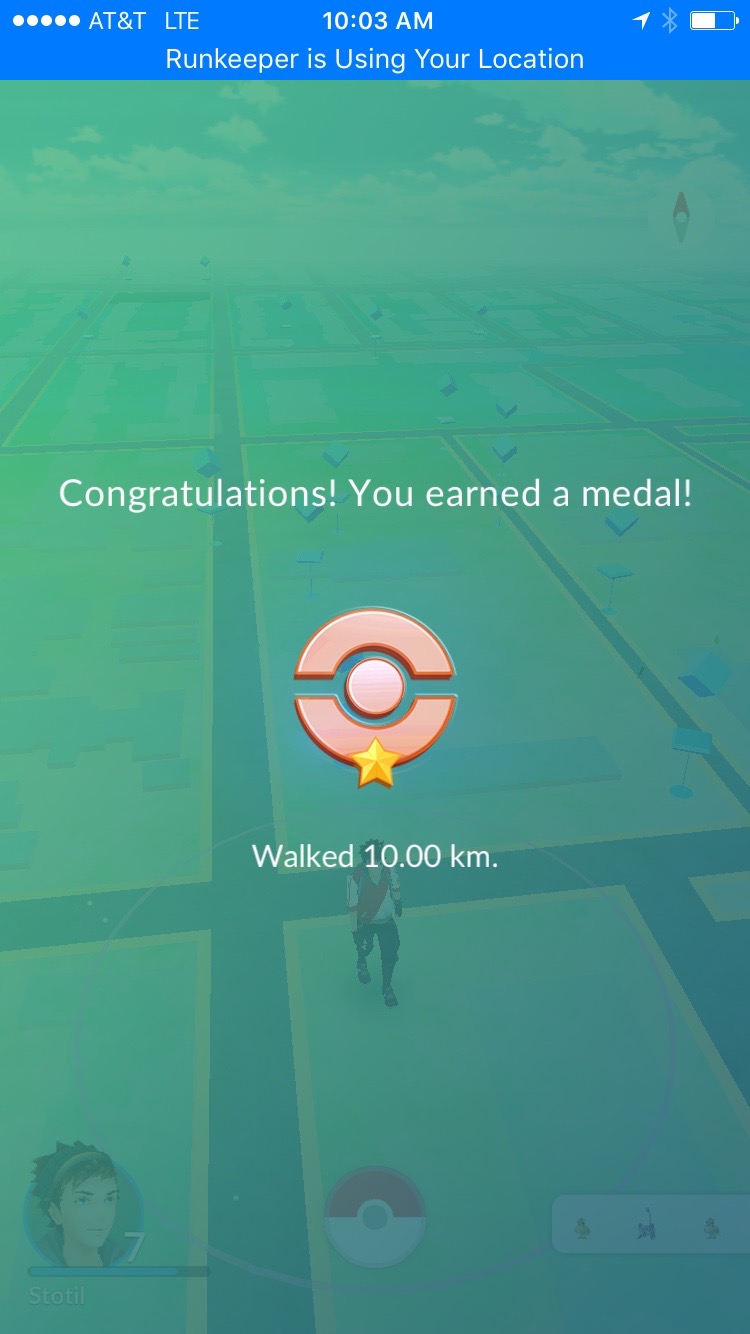
Atkins believes that the game checks your location from time to time and measures the straight-line distance from where it last saw you. If correct, that means it would undercount the distance travelled by a player moving along a curved road. If nothing else, it would miss counting the twists and turns of a looping path, which a running app like Runkeeper is able to track.
He’s been doing tests by walking straight lines and seeing how often the egg-hatching counter updates. He uses Runkeeper as a control to measure his distance and then sees what the game reports. His straight-line walks have yielded accurate results, though he stresses that this is just his research. He doesn’t work on the game. He’s just a curious, smart guy trying to measure stuff.
The frequency of the game’s GPS checks has been harder for Atkins to deduce. “With regards to the detection interval, I checked one batch of eggs and they were all at 0.1km,” he told me over email. “The next time they updated, they were at 0.6m. Based on my pace and that distance increment, 13.3 minutes had elapsed with me just holding the app open.”
If the app is really only checking about once every quarter of an hour, then it would have only checked my position during my one-hour run four or five times and shaved off a lot of the contours of my path. Still, chopping a 12km run to 2km seems a bit much.
Could I have been going too fast? The game encourages players to “walk”. It doesn’t mention running. Your avatar in the game never runs, just walks faster. Atkins said that the distances the game has tracked while he walks have been accurate, so speed may be the factor here. My walk to Madison Square Garden was slightly undercounted, but far less so than my runs.
An article from an official Runkeeper blogger echoed my experience that running gets undercounted — “my 5k run credited only 1.5k for the 2k egg!” Its author speculates that using Runkeeper in the background might itself contribute to Pokemon GO undercounting steps. Atkins told me he uses Runkeeper in his experiments and has been able to get pretty accurate results from his walks. Go figure.
Some people haven’t tried to hatch Pokemon GO eggs by running or by walking. They’re busy strapping their phones to turntables and electric trains. They’re trying to trick the system. That’s what people do, and I can’t say that my desire to hatch some eggs while running was borne from a nobler goal than to bend the rules my way. It’s human nature.
Many video games are comprised of systems. We learn their rules as we play and we can’t help but try to master those systems, exploit flaws in those rules and get the most of what we’re doing. We crave a recognition of order, even as we then try to defy it. Attaining understanding is fun; exploiting that knowledge is a devious thrill.
The logic of a well-structured game promises the predictability that regular life doesn’t have. If we understand how a game works and input something into its system, we assume we’ll get a fair output. Players of Diablo know this as they kill enemies and pick up loot. Players of Candy Crush know this as they plot their moves. Players of Super Mario Bros. know this as they time their jumps. Know the system, then take advantage of it.
Much of Pokemon GO doesn’t obey a predictable system. Players can’t predict where in their neighbourhood the next Pokemon will appear, nor whether it will be a Zubat or Doduo. We know that the game’s PokeStop locations were selected by users of other Niantic or Google products but we can’t hope to understand the system of human psychology that led to some locations being selected and some not.
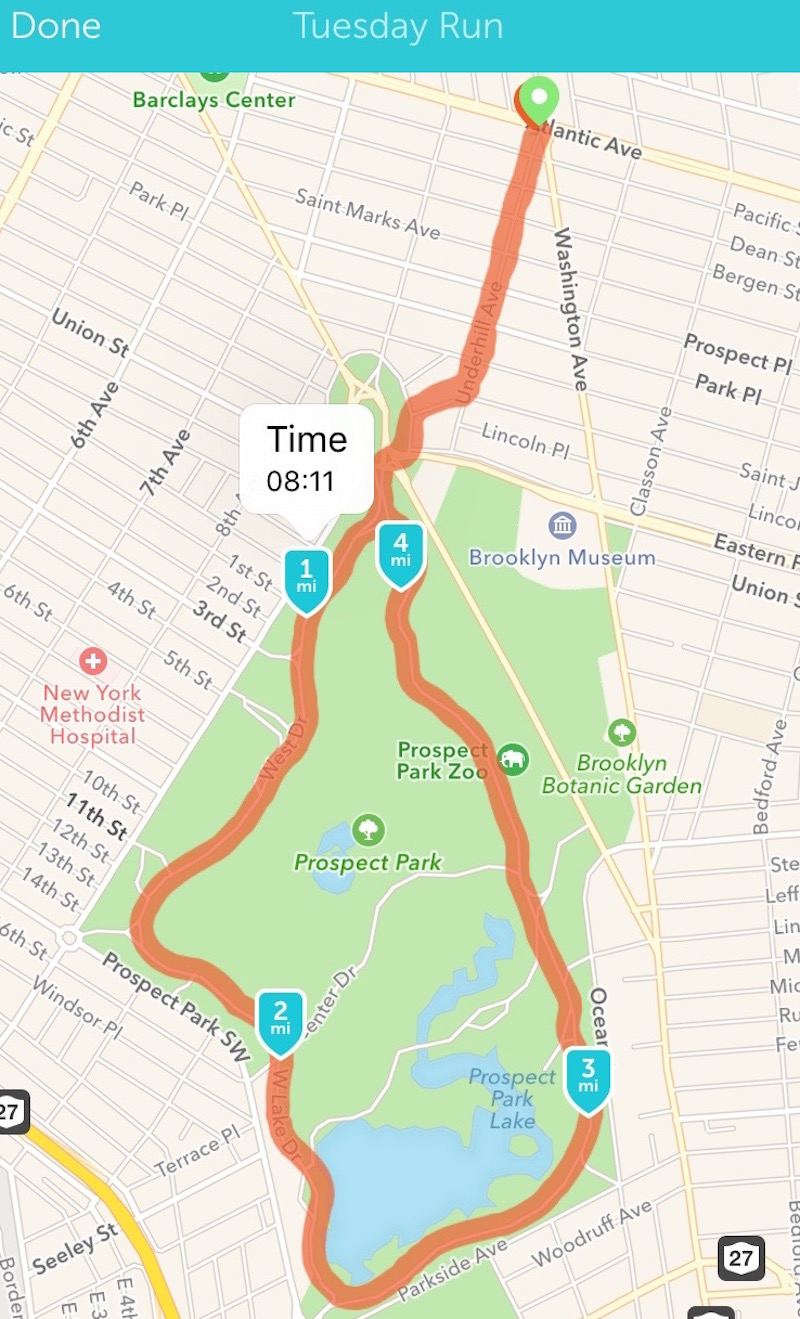
What we can hope for, though, is that a system that tracks the distance we’ve travelled is predictable. We can hope that this part of Pokemon GO, at least, is knowable and logical, such is our faith in numbers, technology and the big brother tech that is supposedly so good at tracking us.
Those of us hammering away at the egg-hatching thing, whether we’re tying our phones to ceiling fans, measuring straight-line walks on our way to work or sweating our way through the park are all trying to figure out how true the system is and what we can do with it. We’re looking for the logic. We’re trying to understand the rules and exploit them. That doesn’t make us bad people. It’s actually pretty normal.
It just doesn’t always work, because sometimes, as they say, the system appears to be rigged. Or, more likely, just doesn’t work as well as it should.
I went for another egg-hatching run on Tuesday morning. I ran a loop in Brooklyn’s Prospect Park and the game badly under-counted my movement again.
Runkeeper tracked my route at 7.92km.
I started the run with three eggs incubating. My 10km egg was nearly ready at 8.3km and one of my 5km was at 4.8km. So close! Another 5km was a little less than halfway there.
It took a full 10 minutes of running before any of those eggs hatched. I saw the screen change out of the corner of my eye. The egg went big, then shattered. A Nidoran popped out.

I’d run more than 1.6km by then. That’s more than 1.6km to hatch an egg that was .2km from hatching when I started. If you check my route, most of my run by that point was in a pretty straight line. I wasn’t going all that fast, either.
After the Nidoran hatched, and without breaking my stride, I started incubating a fresh 5km egg. I finished my run about a half hour later. No other eggs hatched.
End of run tally: The 10km egg which had been with me on two runs totaling 19.97km was showing 9.4km of movement tracked. The 5km egg that was already incubating when I started? It was at 3.3km. The new 5km egg that I began about a quarter of my way into my run? It’s showing a mere .7 km.
Pokemon GO tracked me moving 3.1km even though I ran 7.92km.
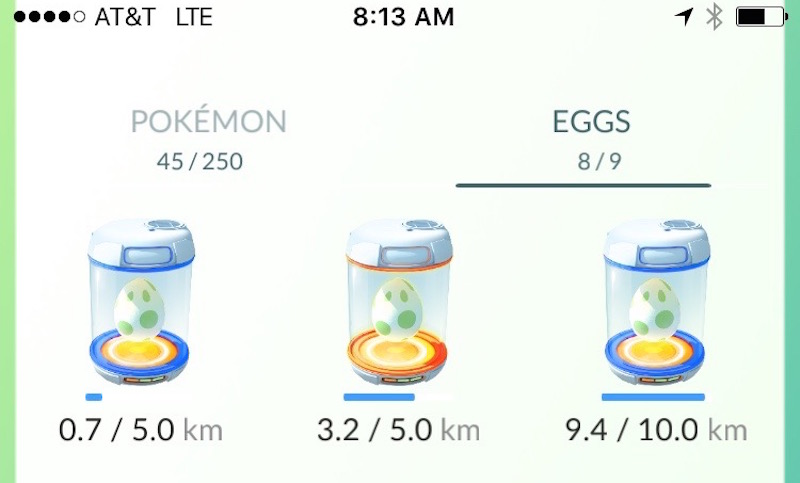
My eggs (including one new one) after my second run. That 10km one just doesn’t want to hatch!
It’s possible that running is what ruined this and that the game can’t keep up. It’s possible that only walking with correctly hatch eggs and that running remains its own lunatic pursuit: Good for clearing your mind, but bad for your knees and bad for hatching Pokemon eggs.
It’s possible we can figure this out or that we live in a world that is just too chaotic, too unstructured and tied together by technology that is just too imperfect. Or it’s possible some of us just run too damn fast. That last one makes me feel the best. I’m going with that.
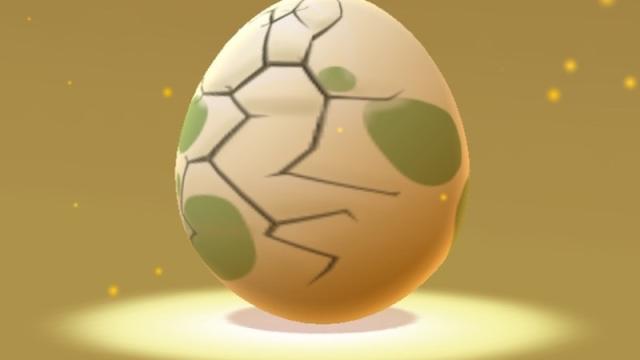
Comments
28 responses to “The Uncracked Secrets Of Pokemon GO Egg-Hatching”
When I’m at work, I sometimes just leave my phone on Pokemon Go. It’s completely stationary on my desk, but the gps has me supposedly running all over the suburb, and I’ve managed to hatch alot of eggs just by staying completely still….
When I’m at work for two weeks there’s no service so it can’t track the 4km I walk to work.
But if I leave it open in the camps wifi it slowly cranks up the distance from glitchy tracking. So that’s what I do now 😛
I find if you run, ot doesn’t always log very accurate km, but walking it seems within about 10%.
And yeah, GPS glitchiness can rack up a bit of walking if you leave it open when it is sitting still.
For a game based on GPS and distance tracking… its accuracy is terrible. Especially when you compate it yo any actual map… the rubberbanding when it stops tracking you is infuriating and I walk the same path everday to work/home and the results are so scatter shot its ridiculous.
I wonder how many Americans just blame kilometres for this error, causr it clearly wouldnt happen if we used good olde imperisl measures :p
Yeah make it more complicated, that would help (sarcasm)
Eh, seems simple to me. App reports your location to the server, and your avatar being moved happens server side.
Laggy, overloaded servers means that doesn’t happen as often as it should, so moving with any decent speed would cause large ‘lurches’ that exceed the speed threshold for it to count that piece of movement. It happens for about 20-30% of walking distance for me, and the theory matches why jogging is a lot worse.
It’s also possible that the GPS report frequency is lower than other apps in an attempt to reduce battery load.
I don’t think reducing battery load is very high on the priority list.
So I work for a GPS tracking company. We track pretty much anything on wheels all throughout Australia. So needless to say I know a thing or two about GPS accuracy and the things that can cause inaccuracy.
Armed with this knowledge I “walk” roughly 5.5k a day in pokemon go while sitting at my desk.
Tip1: Keep your phone flat with the top pointing either north or south, most GPS satellites travel along latitude not longitude and this will increase GPS drift.
Tip 2: Cover a bowl in tin foil, then put your phone in it. Reflecting signals helps the drift.
Tip 3: Stay away from windows, having a direct line of site to the sky improves GPS accuracy.
Some may consider this cheating. But since I know people using Mock locations to walk around New York form their couch in Sydney’s western suburbs I don’t feel so bad.
Thanks for the info…I was wondering if foil would make a difference but quick googling was only showing me how to increase accuracy…not decrease.
I prefer to think of this as GPS bending, kind of like with Ingress in my old house, from the bathroom with no windows, it actually pushed my location 10m out into the road, just in range of a portal outside. Good times!
Pokemon Go is a terrible “exercise” companion app. I’ve found its affected my exercise in a negative way. Sure I walk more than I usually would, but on the weekends when I have time for my longer run/jog/walk it becomes more like a jog/walk/stop while using Pokemon Go. And at the end its only tracked half the distance. Whereas if I walk a few hundred meters in a shopping center the app has me walking over a kilometer.
Its a terrible exercise app… cause you already had one.
If you didnt have one… or a reason to go outside in the first place… its excellent.
I run and do pokestops on the fly, I miss some yeah, when a Pokemon appears but I don’t stop.
You know you don’t need to stop right? Nothing is stopping you, you don’t need to get every pokestop.
Try adding 3 dogs and only 4 Pokestops on my route to the equation and you’ll start to see why its just easier for me not use Pokemon Go during my (the dogs) exercise.
Maybe you need to find a better route… I run the city loop (Brisbane, South Bank) and I have no such issue.
I some times even get to work on my Benji Marshall step as well when running through the gauntlet.
Pokemon Go is about exploring, if you’re running the same route every day, then switch it up, don’t use it when you walk the dags, find a area with a ton of Pokestops and go for gold.
Lol. I wish. Next time you head to the Gold Coast stop in at Upper Coomera and check out how many (few) Pokestops we have. Off the top of my head I can only think of about 6. Its not a few hundred meters between stops like in cities, its more like a few to several kilometers.
Like I said if I want exercise I leave Pokemon Go at home, if I want Pokemon I get in my car and drive to a metro area.
Just my two cents worth.
HAHAH I’m heading up there this weekend, thanks for letting me know. Its good to know I won’t miss much!
TL:DR version: The GPS tracking on PokemonGO is crap.
I worked this out after 1 day with the app. The code is a buggy mess. I’m amazed people put up with it tbh.
People put up with a lot for pokemon…imagine if this game had been done right.
If the dev’s are staying quiet about the game then it’s possible there may be some ‘conditions’ based mechanics around hatching eggs not just distance traveled as the game indicates. E.g accelerometers track movement that might not be ideal for hatching eggs, like jogging? Just a theory though, usually the simplest explanation is the correct one i.e. it’s a buggy mess.
I had some success yesterday hatching eggs by switching my GPS on and off a few times, the “distance” it covered whilst reacquiring the signal was enough to trick the game into thinking I was walking.
‘Your avatar in the game never runs, just walks faster’
I’ve been in the car and my avatar has run, as one would hope at 110km/h
The movement may be capped. distance/time etc
I put my phone in powersaving mode to make my gps less accurate and leave my phone on my desk with the app open behind me while I work. It clocks up a few free km per day due to inaccurate gps signal bouncing my guy all over the place.
A big article for “game servers are still crap and don’t work properly”
The easiest way to hatch eggs is to leave your phone on while you drive through rush hour traffic to get to work. Is practically guaranteed to hatch at least one egg a day, though it depends on your commute.
Ive been using GO as motivation to exercize more and Im practically an expert at how it tracks after 175km and over 100 eggs hatched. My 4.5 mile trip to work nets 0.2km by car or motorcycle unless its heavy traffic then its 0.6km on my pedal bike I get 3.5 – 4km. running and walking are both under the speed limit of GO and can add up to 100% except under certain circumstances. First it does cut corners but it updates your distance every few minutes definately less than 15 because on my 15 min break at work I check the egg statuses several times. There is also a dely to it applying the distance. But for me what seems to hamper how far it thinks youve gone is communication either by your internet like week signals or heavy sever load. 2 weeks ago the game looked like I was connected but everytime a pokemon came up it froze and I had to restart(sometimes after several minutes) needles to say an hour jog through the park netted me 0km.
I’ve noticed the same thing when biking: even when I go under 10 mph, the app seems to pick up very little to none of it. On the other hand, it registers a surprising amount of distance while driving, even though the amount of time I spend going less than 10 mph is basically just when stopping and then speeding up again, and most of my routes don’t include much of that.
I’ve been testing it a lot and find it very hot and miss.
One walk I do regularly (3 times a week or so) should be pretty good for the app; a few road wiggles aside, I walk 1.4km south, make a relitively sharp turn and walk 3.3km east, then finally 1.5km nort-east. Thats the straight line distance, once you factor in those wiggles, my walking app (which by the way totally works with the screen locked, FU Niantic) actually records each walk over 7km (usually about 7.4).
Now, walking this route I’ve become accustomed to monitoring my eggs and to be honest it’s all over the place. Twice now I’ve actually had it come pretty close ~5.8km. Although of course that’s still quite a ways off the walking app’s measurement lol.
I have tried other routes, and actually what I’ve found is that generally don’t rush – it didn’t seem to make any difference, and it may even be more accurate walking at a more dawdling pace.
I’m also not sure how much straight lines matter. While it’s totally true that the app only updates the distance from time to time, and of course goes bee line from the last point, actually if you are moving faster you’ll ‘loose’ more meters as the fidelity drops in those delays. It also helps to walk in residential areas, and don’t turn your wifi off to save battery – those wifi routers help zero your location in; I walked a pretty meandering 7km loop through the ‘burbs last Sunday after dinner and forgot to check my eggs when I left. When I saw one hatch, I decided to measure with my walking app how far until that 5km egg hatched – it came up at 5.7km which is pretty close for a flawed system!
All in all I think they have made an improvement – looking at my distances they defo used to be higher, but it’s still not good. My advice is take your time -sorry joggers, it seems it looses a lot of distance for you – and make sure you’ve got data and wifi on your route 🙂
Pokemon Go does NOT reward athletes. They think we’re cheating and penalize us every chance they can.
I put an egg in the incubator yesterday before my run. My Fitbit says 7.2km while Pokemon only credited me for 2.5. Since the last update, wild Pokemon no longer appear as I run through the park. I have to slow down to a joggers pace or speedwalk or get nothing.
I’m so sick of Pokemon Go ripping me off, while rewarding the fatties who sit near the lured Pokestops all day. Now that augmented reality is a thing, hopefully someone will come up with a game that caters to athletes. It’s not fair. We’re our there covering 4x the ground the regular players do, you would think we would catch more Pokemon and hatch eggs faster, but no……
I’m tired of Pokémon ripping me off . I paid REAL MONEY for these incubators and I’m contacting Apple for a refund. They’re good at crediting people back for apps that don’t deliver.
For starters, paying real money for a free game is stupid. Secondly, you’re the worst kind of customer. Period. “If everything doesn’t go my way, I’m gettin’ mah moneez bax.” By buying incubators, you’re worlds ahead of those who rely on the free one… but that’s not good enough for you. But hey, you still get to keep them, even after you f*’d the game and you’ll probably still keep playing, which means you made a huge mess for several companies and in the end, you made-out like a bandit. You’ll probably do it again. If I owned a company, I would want to know who you were… so that I could deny you service.
I’m amazed nobody has said anything about this before… Ride a golf cart, people! Walking my 6 acres at work doesn’t hatch many eggs, but riding in my golf cart sure does! My property has a loop around 7 buildings. I hatch more eggs in a day than anyone I’ve ever met. Yeah I guess I’m being a fatty, but I do get some sunshine and I get out of the office, and I’m hatching more eggs than all my friends… and I only have three incubators.